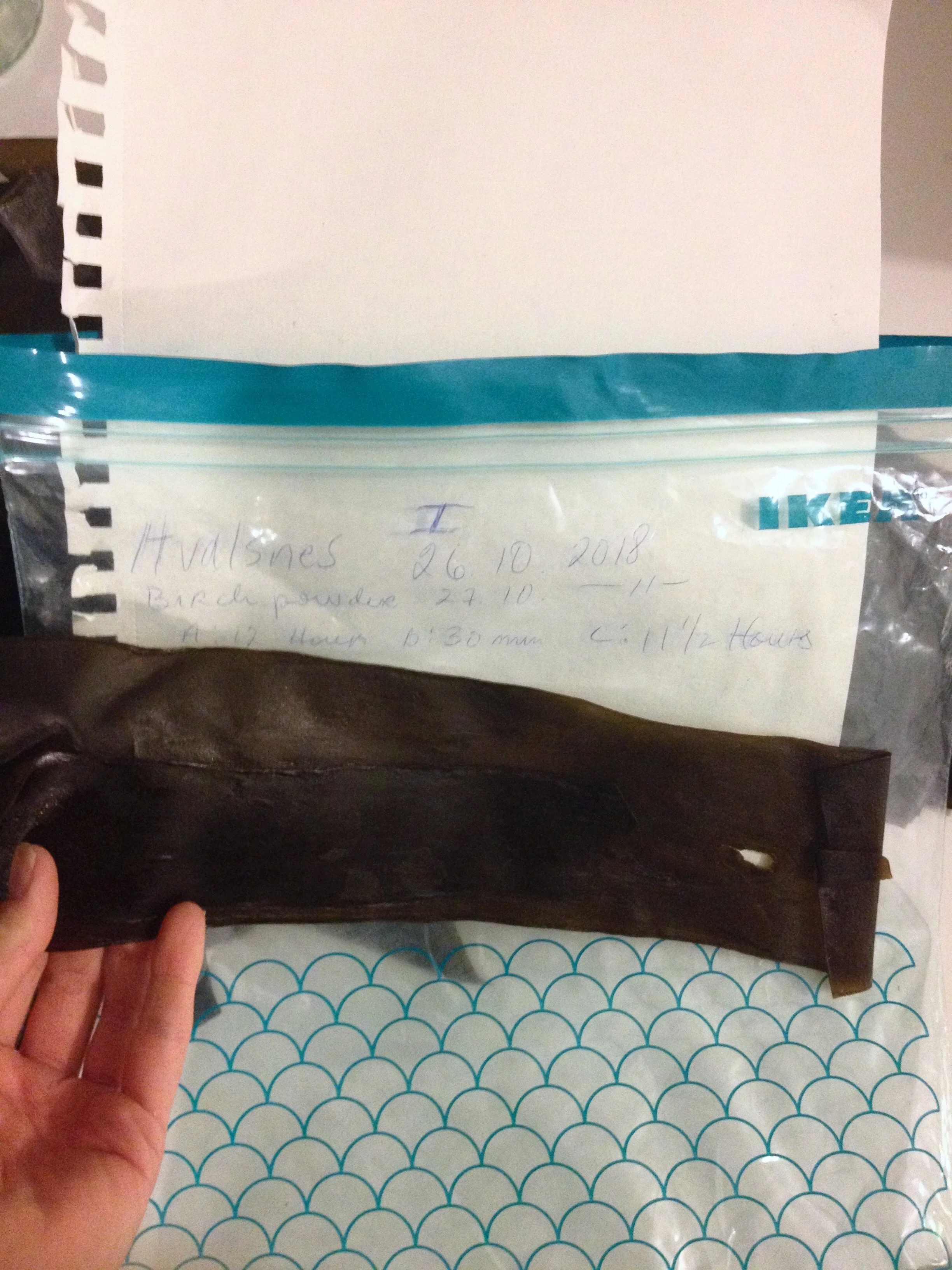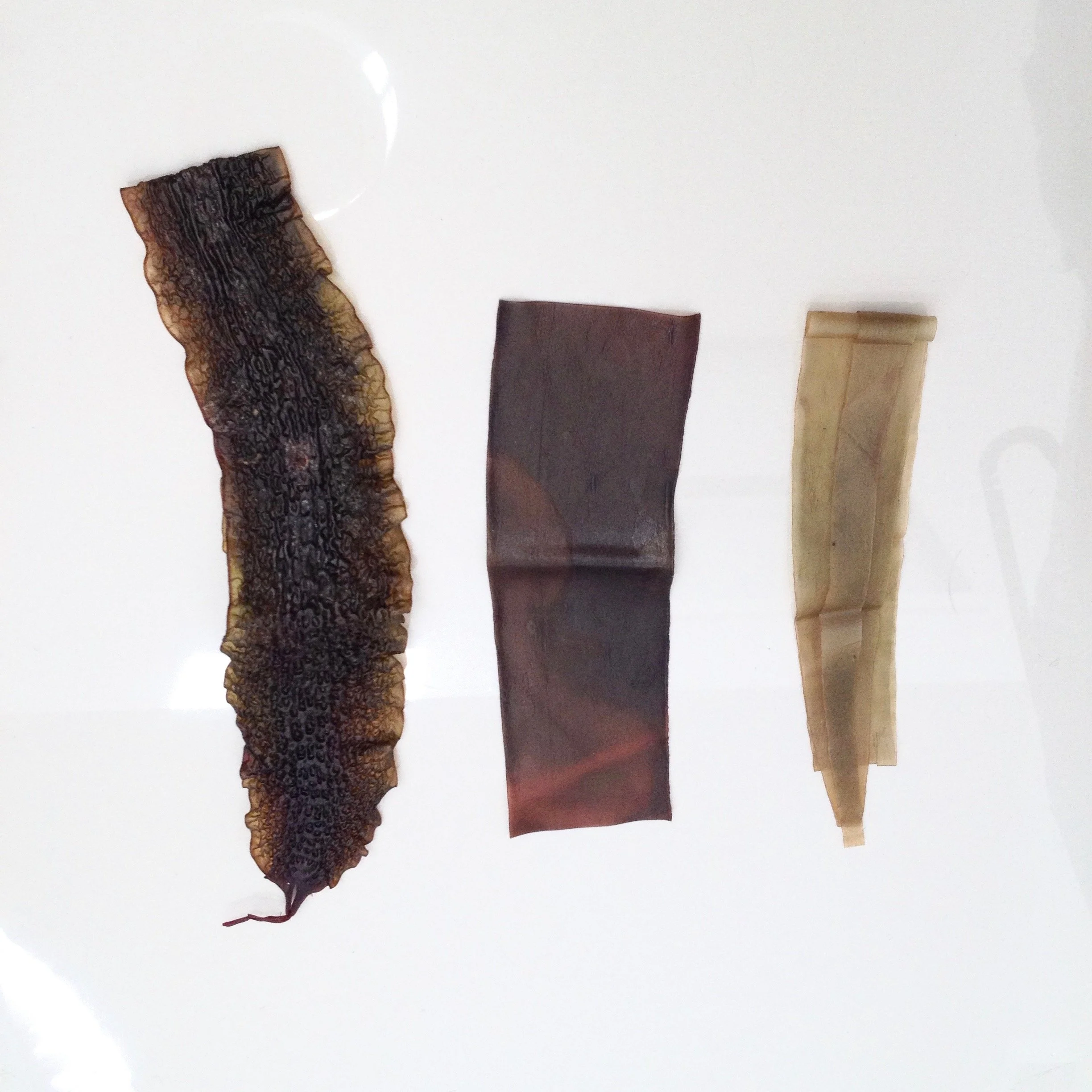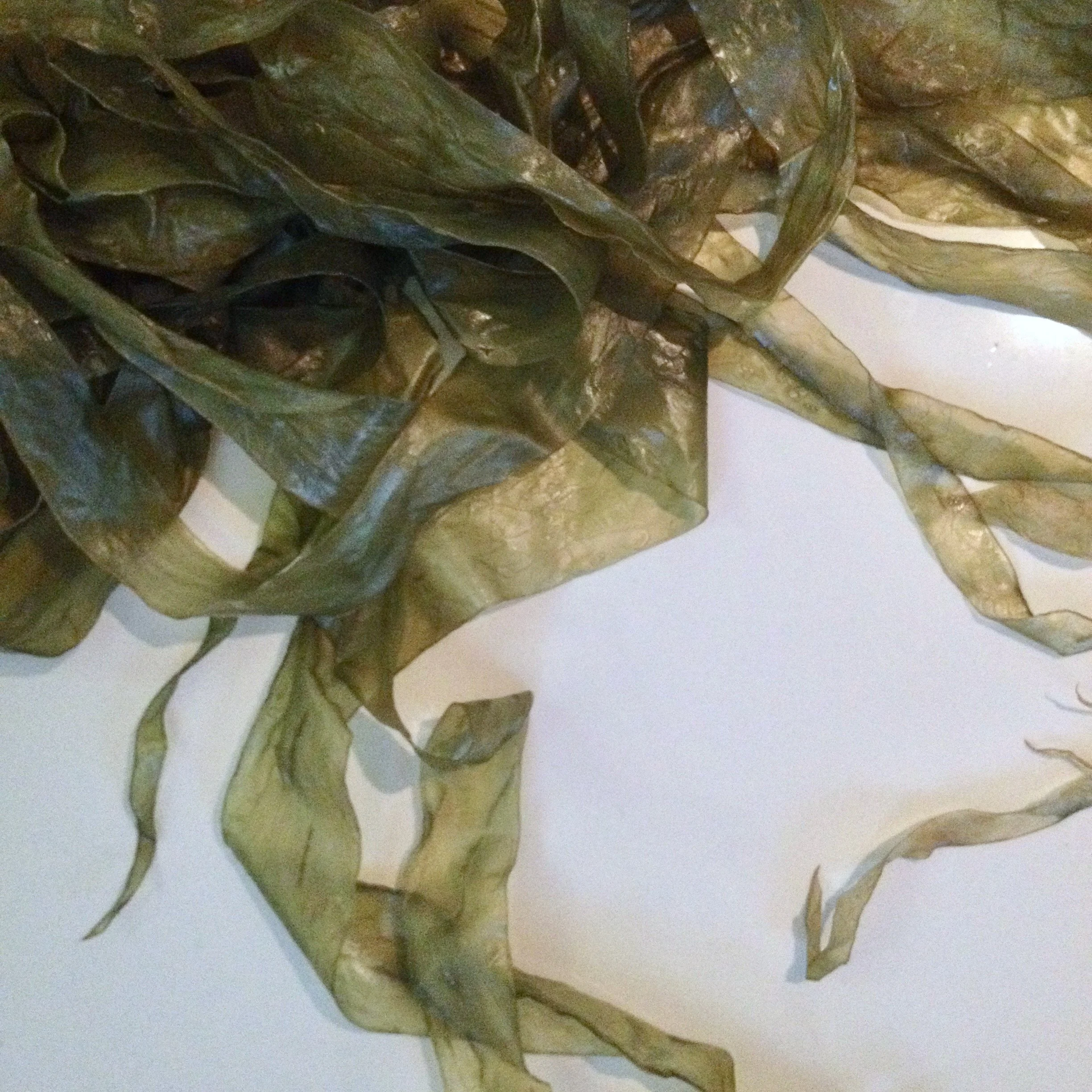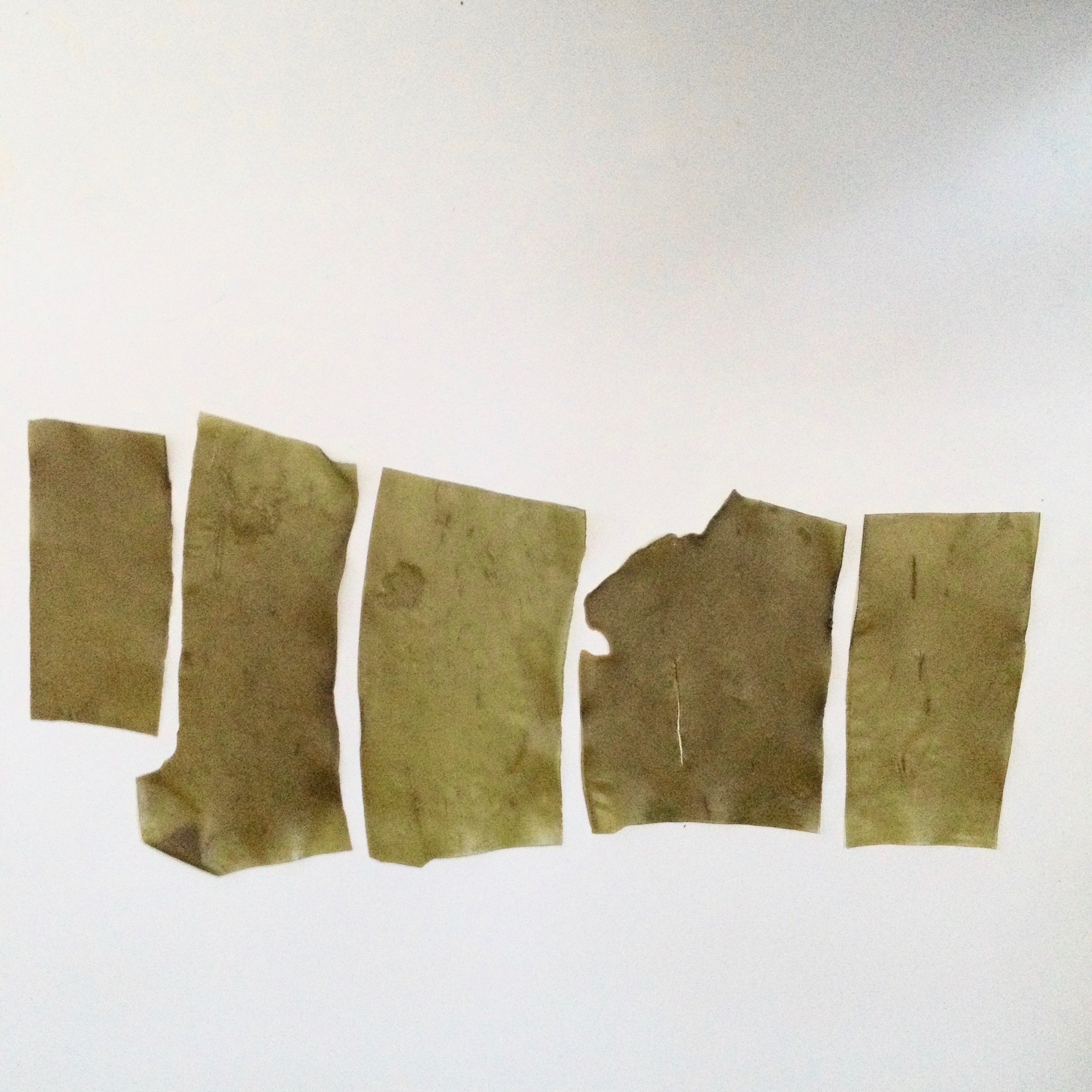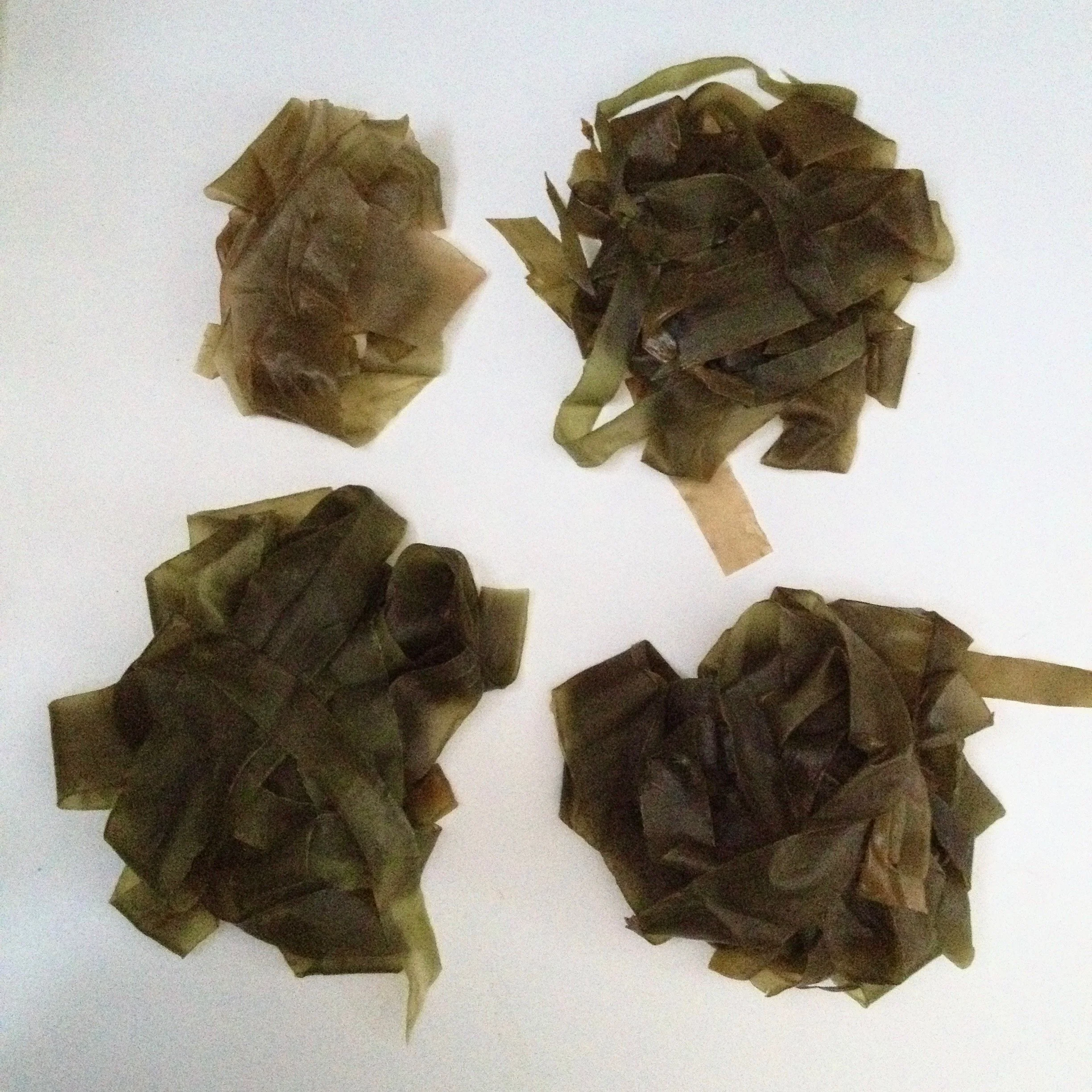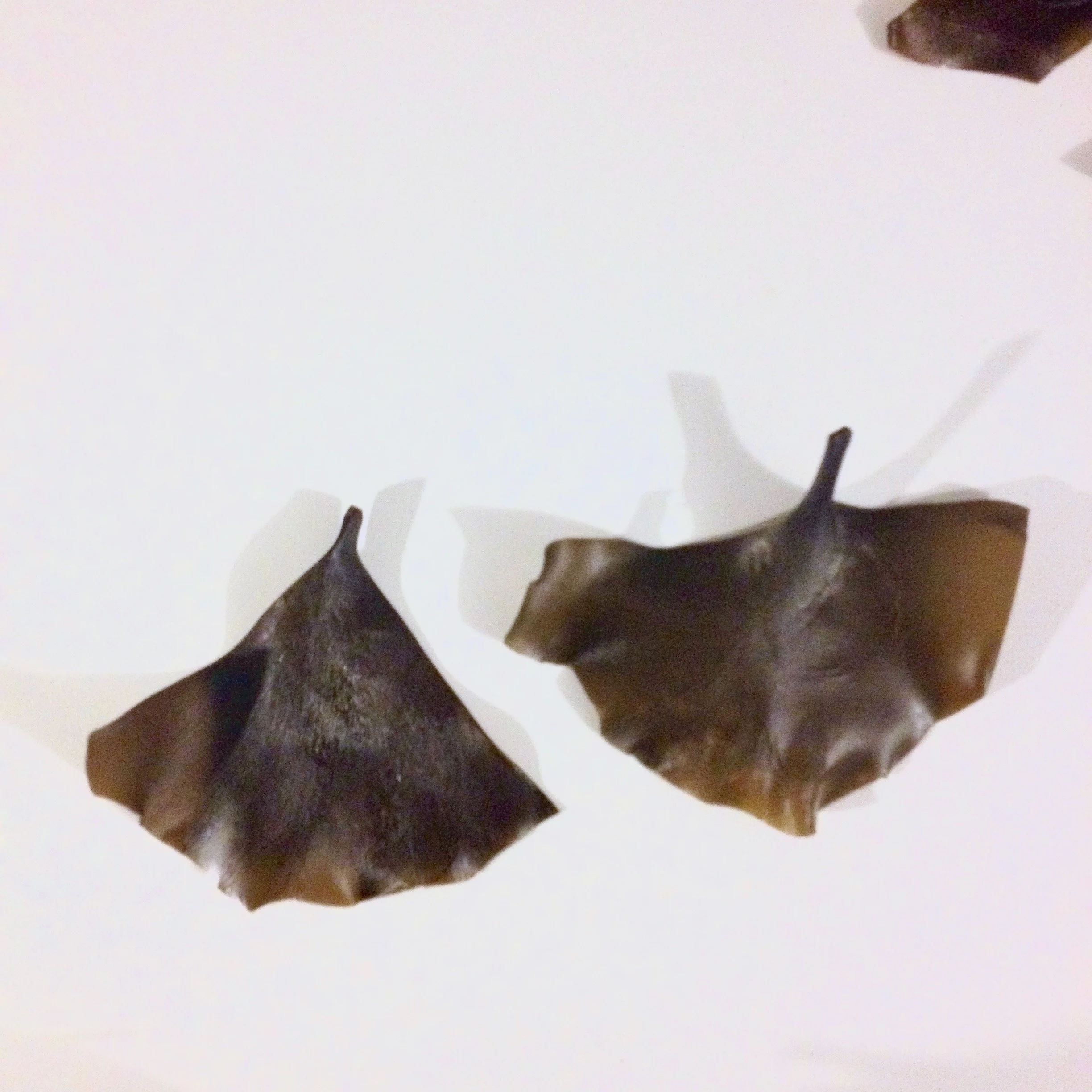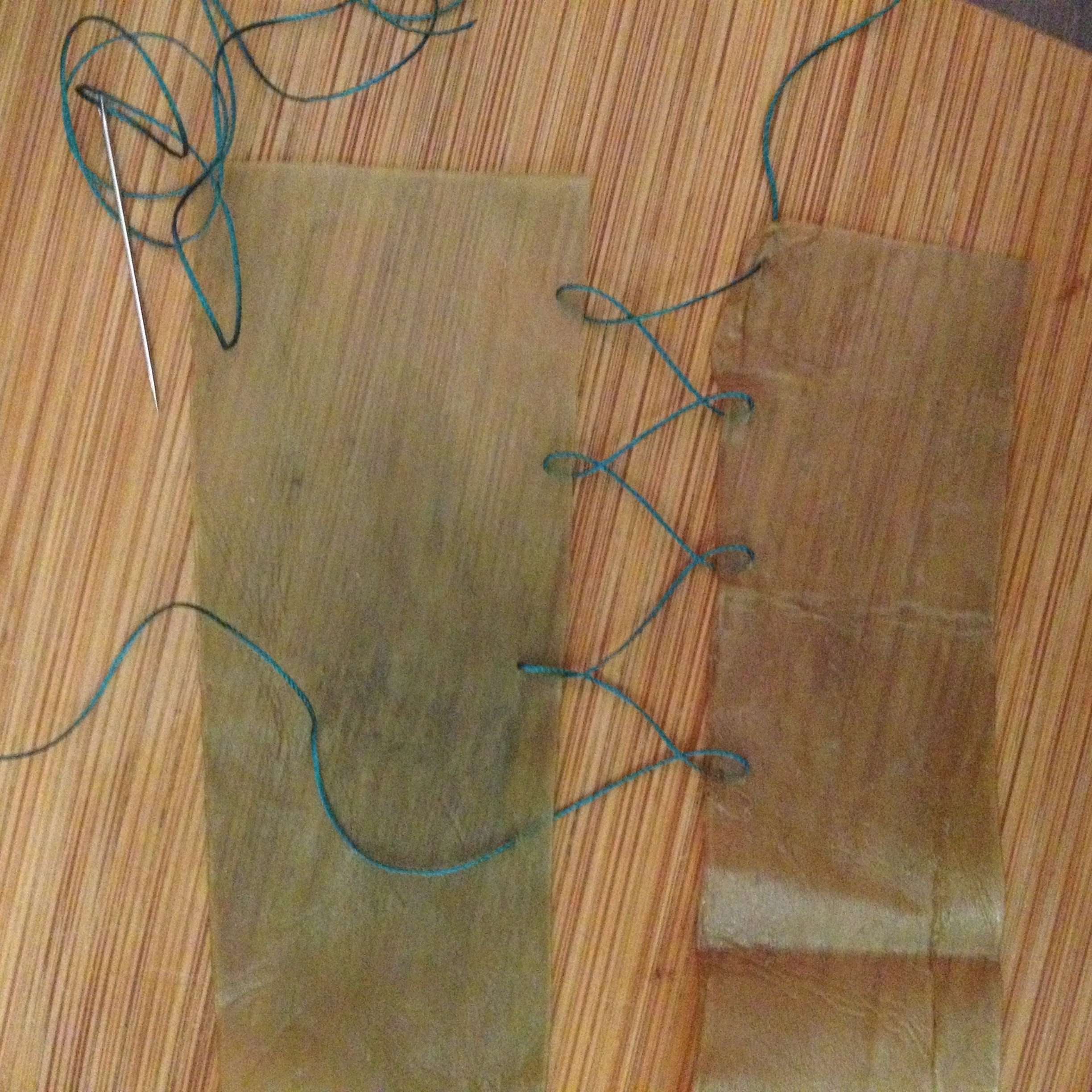Emblamar Studio: Part 1.
A group of international designers came together to explore seaweed as a viable material for fashion. Not as a powder extruded into fibre like SeaCell, but as a preserved material with the texture, smell and colour you would expect. Icelandic artist Katrín Thorvaldsdottir has been working with seaweed for years to create the most magically creepy masks, and now Emblamar Studio brings speculative clothing and fashion accessories.
The Sea Around Us, a film by Emblamar Studio and directed by Magnus Andersen, explaining the studio’s mission and projects.
The project.
Each designer was given a selection of seaweed pieces to work with. We did not know what we would receive, we did not know what the other designers were making, and we did not have any particular brief. The idea was to explore and experiment, to come to understand the seaweed in our own way.
The seaweed still smelled of the sea, and some pieces did not take to the preservation solution as well as others and so were sticky, and they retained their green-brown hues. But they were a delight to work with; as you would use a fabric. It is worth noting that only a small amount was taken and used. Kelp is a common plant in the shallow waters surrounding Iceland’s coasts, and can reach lengths of metres, thereby one piece alone can create a lot.
This was a truly exciting project; there was freedom and exploration and understanding gained. I’ll take you through the experiments and outcome across a few blogs, as I also investigated natural dyes from North Sea seaweed. So, to start with…
Experiments.
The biggest joy with this project, was receiving a little bag of unknown seaweed or kelp, and experimenting. In the first stages I would receive a smaller amount of a few types so that I could understand how the material reacted to particular techniques. The unfortunate part of the project was becoming drawn to a particular species or technique, yet not being able to access it again, though this helped formulate the final garment design.
Initial experimentation then, was partly about material knowledge, and partly about playtime.
Samples.
My favourite species were the thicker smoother types known as Digitata; they were appealing to handle, and I was immediately drawn to using them to punch holes in to tie them together. There were many that had slits, or blemishes already existing - in fashion, these irregularities would be dismissed, but for they highlight life. Some kelp came with the “body”, which was difficult to use because I felt I couldn’t cut it away, again because it was part of that living being. I eventually did take the plunge to use the many flat strands, and ended up with a gingko shape leaf.
I only got one piece of Saccharina - the frilly bobbly one - and I cherished it. As it was alone, it was another case of wanting to savour it for fear of wasting the moment. Eventually it became part of a finished garment, cut into three, and stitched together. The variety of hues, thicknesses and malleabilities enabled a real sense of awe and appreciation for what I was handling.
Testing.
My main thought was to utilise only the seaweed itself - no additional materials. Though it would be allowed as part of the project to incorporate sympathetic textiles, the main aim was to highlight the beauty of the plant alone. So to begin with, I explored using the materials to hand.
Hole punching and tying.
Punching various sized holes in the various thicknesses of seaweed was honestly very satisfying; a particular noise when the metal punch got through, and a perfect hole remained. Thicker and pre-cut almost-squares and rectangles were punched, while sheer malleable pieces were tied - either as thick bows or in knots. I allowed myself a flow state to enjoy the organic piecing together, while my underlying experience of how to use soft materials enabled intelligent construction.
I also ended up with an envelope of “holes” that I wondered about creating sequins with. Some were super tiny, and because the seaweed strips were wide (some I did rip to make narrower), I did decide to trial thread through the holes. Having flat pieces would be beneficial when it came to making a garment, so I also trialled slitting thicker pieces (rather than punching holes) so it could sit flush on the skin.
Stitching.
Being able to create a “fabric” from the seaweed ideally meant navigating the stitching together of thin strips. As I was receiving a lot of small pieces - suitable for the hole punching - or lots of long strips, I was fairly limited in how to make large swathes that would have the opportunity of being a covering garment - not a Hallowe’en-esque costume.
What is tricky when stitching seaweed, is that each needle prick destroys the strength allowing for tears. If you machine stitch, yes it is quicker, but you need to ensure the tension isn’t too tight or you don’t suddenly accelerate. Hand-stitching was slower and more controlled, yet some seaweed species were temperamental to handle - I ended up using my body as a background to see where was next to stitch, but my legs became rashed in reaction to the plant and continuous pinpricks.
The outcome could be different when the material was held to the light, so this has to be taken into consideration when thinking about possible garment iterations.
Padding and folding.
During our catch up meetings at Dover Street Market, I would do some market research. It’s a good place to see fun textiles, and at the time here there were lots of padded garments. I was reminded of a species of seaweed in the North Sea, that I’m sure is called Shepherd’s Purse (but couldn’t find it listed anywhere to confirm), that has little padded balls at the end of its fronds. So I experimented with filling folded up pieces with cotton wadding. Realising I would need a huge piece of fabric in order to make an impact with this technique, I simply hole punched and tied them to another piece. It didn’t fit with the weaving and early hole punch tests, that I left the experiment there. However, with a plentiful amount of small padded pieces, I could see it having more of a fashion-forward impact.
Other experiments were with ruffles, layers and folds to build up the thickness. These were interesting, but felt they required too much material for the impact they would make, and variety of outcomes.





